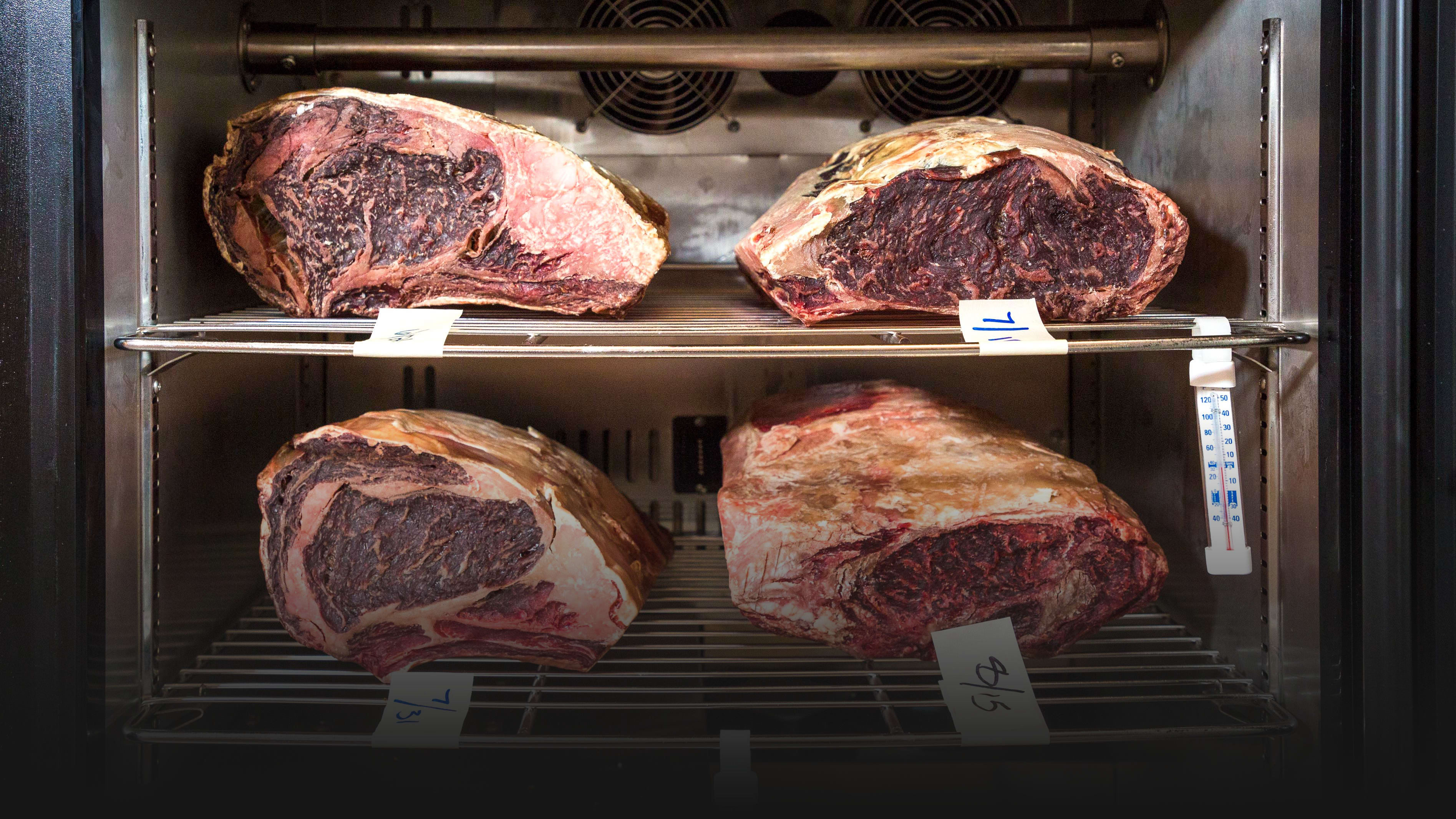Dry Aging a Loin of Beef
Cooking Skills
You Can Dry-Age Steaks in Your Fridge
Learn how to deepen your steak's flavors at home with cheesecloth, a fridge, and time.

Living in Montana has spoiled me on steaks. With so many ranches within 100 miles of me, I not only have my choice among several local purveyors, but I'm often able to buy directly from the rancher. (More often than not, that rancher is Oxbow Cattle Co. in Missoula.)
Such high-quality meat demands proper preparation and cooking. Generally, I've stored steaks in my refrigerator in the butcher paper or the foam container they came in. But I learned I could be replicating the dry-aging process—usually the purview of fancy steakhouses—in my own refrigerator. I thought my steaks were delicious before, but dry-aging has taken them beyond that baseline.
Why dry-aging? Experts know it makes beef more tender and flavorful—butchers aren't just hanging quarters of beef in refrigerators for aesthetics. When beef is exposed to air at low temperatures, its flavors become more concentrated as muscle protein transforms into amino acids and peptides. Enzymes break down connective tissue during this process as well, making each bite more tender.
By contrast, wet-aged beef—the kind that's sealed in plastic—isn't losing as much moisture. So if a home cook wants the benefits of dry-aging from a regular, packaged steak, they'll have to replicate it in their kitchen. The technique is best applied to any cut of steak on which you'd want a browned, seared crust: tenderloin, porterhouse, rib-eye, top loin, and strip steaks.
"Surface drying that happens over a few days in the fridge will greatly improve browning, and thus flavor," explains Paul Adams, science editor at America's Test Kitchen.
Here's how to do it: Pat the steak dry, then wrap it loosely in cheesecloth. (Home refrigerators are less humid than the walk-in coolers at a butcher shop, so the cheesecloth guards against too much moisture loss.) Place the steak on a wire rack set in a baking sheet, then set it in the coldest part of the refrigerator, which is generally the lowest shelf, toward the back.
Now, the waiting game. The balance in dry-aging in a home refrigerator is to maximize the effects of drying without introducing bacteria that could spoil the meat. While beef stored in a refrigerator specifically designed for dry aging can safely sit for a month or more, Adams advises more caution in a home refrigerator. Temperatures above normal refrigerator standards—which could occur if the fridge door gets opened frequently, say by party guests in search of beer—would increase enzymes' activity in breaking down tissue, but would also potentially hasten the growth of bacteria.
Based on America's Test Kitchen methods, I've settled on three days in the refrigerator for my small tenderloin steaks. Tasted alongside their non-dry-aged components, the steaks that had been aging for three days in my refrigerator had a noticeably more satisfying crust, creating greater contrast between the seared outer layer and the tender, succulent interior. Such a short period of dry-aging didn't much affect the steak's interior, but the better sear alone makes the step worth it. When cooking such beautiful beef, every detail counts.

Adams also says I could apply the refrigerator dry-aging process to another Montana delicacy: venison, elk, and other game meat. In fact, those meats might benefit from an even longer aging period in my refrigerator.
"Dry-aging venison and the like will give the same protein breakdown and moisture loss effects," he says. "Fat breakdown will be less noticeable because there's less fat, and that should allow you to leave it longer without starting to get rancid tastes."
I'm eager to try this process with some of the venison steaks in my chest freezer, stored there after my husband's hunting trip last fall. Non-Montanans, though, might have to do a bit more legwork to find that raw material.
Source: https://www.americastestkitchen.com/articles/3537-how-to-dry-age-steaks-in-your-fridge
0 Response to "Dry Aging a Loin of Beef"
Post a Comment